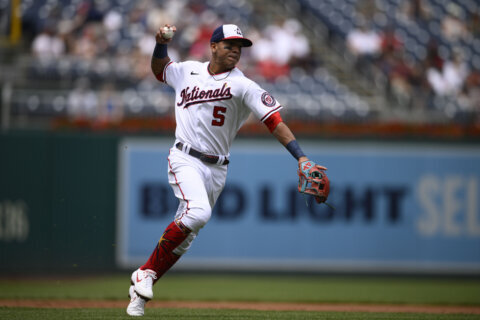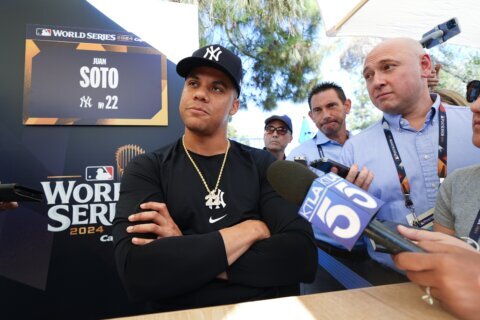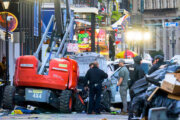WASHINGTON — Major League baseball instituted sweeping security measures this season, mandating all 30 of its ballparks to screen fans through metal detectors as they entered games. But while the effectiveness of these measures at preventing potential threats to fans is up for debate, a number of other incidents have prompted MLB to further examine the basic infrastructure in place to keep fans safe during games.
In early June, 44 year-old Tanya Carpenter was attending a Boston Red Sox game at Fenway Park when Oakland Athletics infielder Brett Lawrie swung at a pitch and broke his bat. Part of the wood went flying into the stands, striking Carpenter in the head and leaving her with life-threatening injuries.
The bat that went into the stands and hit Carpenter was a made of maple. Maple bats first began making news a few years ago, when they began breaking at an alarming rate. Maple has a tendency to shatter more easily and dangerously than ash, but many players prefer it, especially after Barry Bonds set the single season home run record swinging a maple bat.
After a 2008 study concluded that maple bats were three times more likely than their ash counterparts to fracture into multiple pieces, the league introduced new bat regulations in 2009. And after an incident such as the one at Fenway, maple may once again be on the chopping block.
Speaking at the MLB First-Year Player Draft several days later, commissioner Rob Manfred told the media that the league would look into the issues.
“When you have an issue like this, an incident like this, you have to go back and re-evaluate where you are on all of your safety issues and trust me, we will do that,” said Manfred.
At the time, he left the matter, and MLB’s response to it, fairly open-ended.
“There’s a variety of issues that we’re going to take a fresh look at,” he said. “You have to react strongly to an incident like this, but I think the best word for it is that we’re going to re-evaluate where we are on the topic.”
But after reaching out to MLB’s head office this week, it appears that the league is considering potentially expanding the safety netting behind home plate to extend further into the field of play.
“We are in the midst of an ongoing process right now, which involves actively studying and evaluating a number of issues related to fan safety at the league level, including netting and bat safety,” said MLB VP of Communications Michael Teevan in an email.
The National Hockey League made similar changes after 13 year-old Brittanie Cecil was killed by a puck sailing over the back boards at a Columbus Blue Jackets game in 2002. Three weeks later, the league made the decision put up protective safety netting in all arenas, which actually prompted fan backlash at the time among some who felt it took away from the game experience.
While MLB does not plan to make any changes until the offseason, it also faces a challenge unique to baseball, in that every ballpark has different dimensions and angles, requiring more detailed study into how to create a uniform standard to best address the issue that works for each venue.
“Regarding netting specifically, we are considering the factors and challenges of ballpark design,” Teevan continued. “We are examining data on where balls and bats have gone in previous incidents.”
A Bloomberg News study found that over 1,700 spectators each year are injured by foul balls, the most potentially harmful of which are often hit just past the current reach of netting in place. After a fan was seriously injured by a foul ball in Detroit, several players, including veteran pitcher Justin Verlander, expressed their opinion for the need for better fan safety measures.
More protective measures need to be put in place in all ball parks! Players are sick of seeing injuries that could easily be avoided!
— Justin Verlander (@JustinVerlander) August 22, 2015
Of course, restricting foul balls from going into the stands potentially means fewer souvenirs, something many fans consider an intrinsic part of the game. Some fans reacted negatively to Verlander’s comments, blaming fans lack of awareness for their injuries.
MLB franchises have long lived under the protection of the so-called “Baseball rule,” which is printed on the back of every ticket. Essentially, it says that by entering a ballpark, you are assuming liability for any injury that occurs and that the organization is not responsible. But in order for that rule to hold up, MLB must show that it has basic levels of preventative safety measures in place.
Teevan indicated that MLB has heard from fans, and may also involve the MLB Players Association in the decision-making process before making recommendations to clubs prior to next season.







